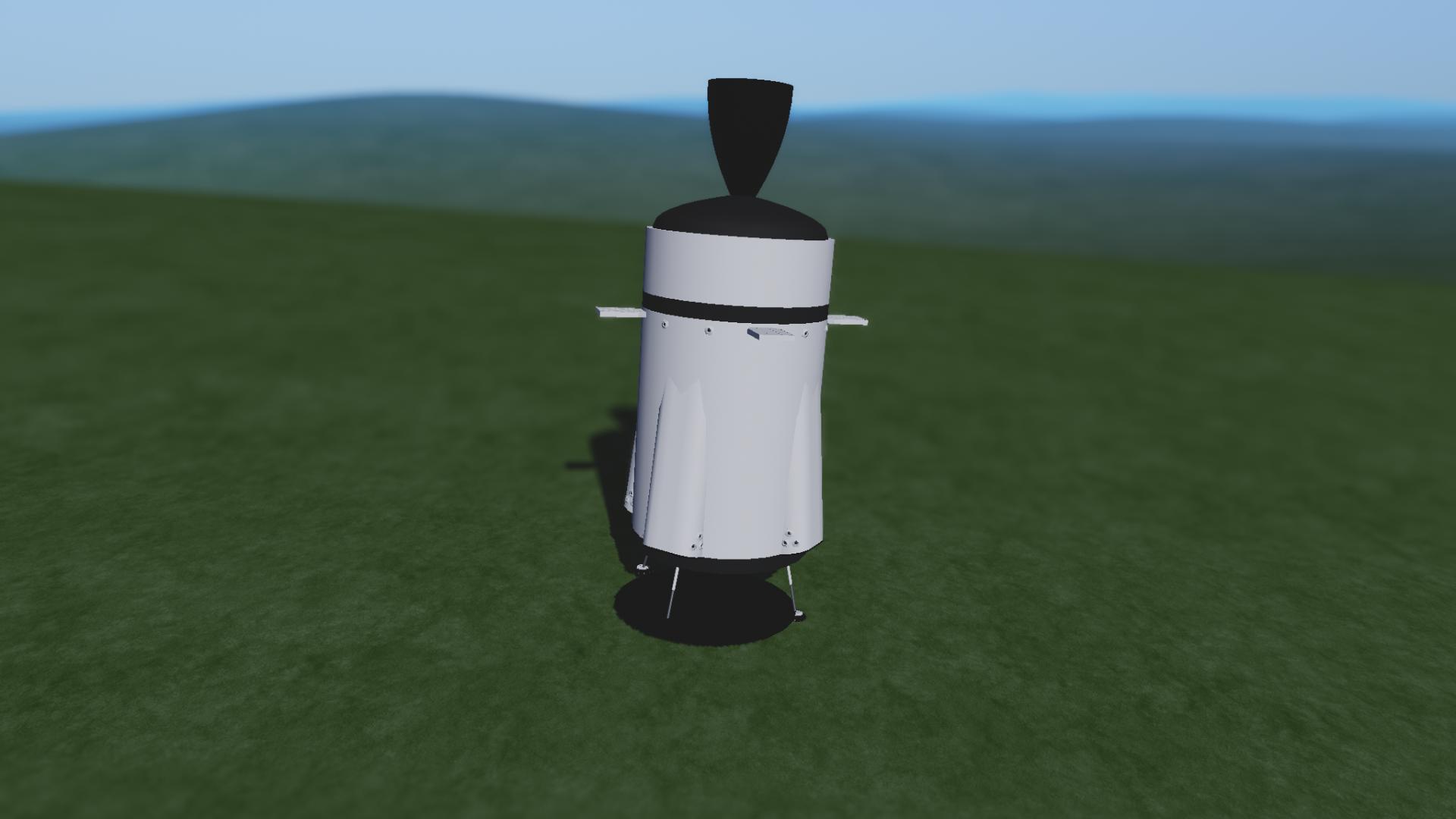Grid fins from here: https://www.simplerockets.com/c/0v8xhG/Grid-Fins-Gen-1
Icarus 7 is a fully reusable two-stage-to-orbit super heavy-lift launch vehicle designed and manufactured by Nova Aerospace originally as a friendly competition with SpaceX's Falcon 9. The first stage is powered by Nova Aerospace RS-63 engines, using cryogenic liquid oxygen and liquid methane as propellants, the second stage is powered by a single Nova Aerospace RD-10 engine using liquid hydrogen instead of liquid methane. Its name is derived from the fictional Sunshine spacecraft, the Icarus 2, and the seven RS-63 engines of the rocket's first stage. Unlike the Falcon 9 and most other rockets in service, the Icarus 7 is fully reusable, utilizing a second stage designed to reenter and land on earth vertically upside down, making it a large engineering achievement. This feat was achieved for the first time on flight 5 in November 2022 after 4 previous failures.
The Icarus 7 is a far cry from its original purpose as a competitor to the Falcon 9 and is able to launch over 220 tons (200,000 kg) into Low Earth Orbit with just the first stage booster alone. The Icarus 7 is also capable of going to Mars however payload is yet to be tested.
In July 2012, Nova Aerospace had publicly announced plans for a rocket capable of competing with the likes of the Falcon 9. By February 2018, they had made another announcement to launch the Icarus 7 by 2019. In reality, the first launch would occur in mid 2022.
With the lack of NASA funding of development costs, development took much longer than the Falcon 9.
In 2014, Nova Aerospace announced it was proceeding with the development of making the Icarus 7 fully reusable, an engineering feat thought to be near impossible. Nova Aerospace often responded to several doubts given by the media. By May 2017, testing of both stages of the Icarus 7 began at Cape Canaveral. While the first stage booster landing was a success, the second stage broke up during reentry, this sparked even more doubts from the media but Nova Aerospace continued the development of a reusable upper stage. Shortly after in June 2017, another test began after some minor additions to the second stage were added, the landing yet again failed with the second stage entering a spin and breaking up on reentry. By September, yet another test began, adjustments to the reaction control system of the second stage allowed it to stay intact during reentry but tipped over on touchdown, causing the stage to explode. On the brink of cancelling plans to make the second stage reusable, a final test in November began, the second stage had finally successfully landed, surprising the media and employees at Nova Aerospace.
Production of the Icarus 7 began in late December 2019, by April 2020 the first production model of the Icarus 7 was produced but wouldn't launch until mid 2022.
The Icarus 7 uses a bolted Octaweb-like structure similar to the Falcon 9's. Monopropellant Thrusters and Grid Fins would control both stages' descents through the atmosphere. The first stage uses four landing legs and lands much like the Falcon 9's booster but the second stage reenters and lands upside down, this is to protect the vacuum engine, after detaching the payload the second stage would deploy its grid fins and perform a de-orbit burn before orienting itself to face "nose" first towards the atmosphere, moments before reentry it will jettison its heat shield cover allowing the cover to burn up in the atmosphere, it will then perform a reentry burn using 8 descent engines mounted on the sides, moments before touchdown, it will deploy its 4 retractable legs and land like normal. In the case of the second stage being unable to land on a net, land or droneship the stage is able to stay buoyant in water for long enough to wait for helicopter or boat recovery. The heat shield of the second stage is also reusable for 3 flights until refurbishment is needed.
The fairing of the Icarus 7 is expendable, as Nova Aerospace saw no need to make reusable fairings, this is especially because the fairings would be unable to reenter Earth's atmosphere.
The overall height of the Icarus 7 surpasses the Falcon Heavy by 5 meters however this height difference is insignificant.
GENERAL INFO
- Created On: iOS
- Game Version: 0.9.802.0
- Price: $102,714k
- Number of Parts: 331
- Dimensions: 77 m x 8 m x 8 m
PERFORMANCE
- Total Delta V: 83.8km/s
- Total Thrust: 27.3MN
- Engines: 16
- Wet Mass: 6.68E+5kg
- Dry Mass: -1,330,863kg
STAGES
| Stage | Engines | Delta V | Thrust | Burn | Mass |
|---|---|---|---|---|---|
| 1 | 7 | 40.6km/s | 20.3MN | 4.2m | 6.68E+5kg |
| 2 | 1 | 39.7km/s | 3.0MN | 3.7m | 1.48E+5kg |
| 3 | 8 | 3.5km/s | 4.0MN | 62s | 1.38E+5kg |









